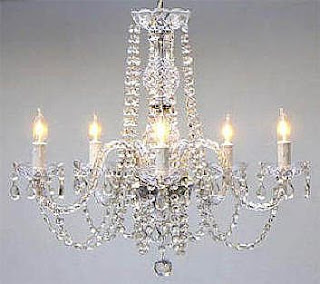OBJECTS
Objects are the material things people encounter, interact with and use. Objects are commonly spoken of as material culture. The term 'material culture' emphasises how apparently inanimate things within the environment act on people, and are acted upon by people, for the purposes of carrying out social functions, regulating social relations and giving symbolic meanings to human activity" (Woodward 2007, p.3).We can think of objects in a variable of ways, however Woodward points out that there are three identifying categories to determine the ways in which objects can be 'cultural':
- Objects as social markers
- Objects as markers of identity
- Objects as sites of political and cultural power
With ALL objects it is important and extremely crucial to look at not just at WHAT the object is but the WHY and HOW.
Objects as social markers
Bourdieu's writing on taste depicted the ways in which objects came to be markers that could represent aesthetic and cultural value. His theory looks to develop key idea's as to how the role of aesthetic choice or one's personal choice can ultimately reproduce social inequality. Bourdieu was particularly concerned with how personal taste was based on "objective and absolute criteria" that tended to fit to specific social and class fractions, showing how those within particular classes had distinctive taste preferences. Taste, to Bourdieu becomes a visible marker of difference and aides in defining social position and status structures (Woodward 2007, p.6).
Case notes:
This is a crystal chandelier, but how does this object become a marker of aesthetic value?
For the owner who displays this in their home, the chandelier becomes a lighting choice to depict a way of self-presentation. "The object is given meaning through the narrativisation of broader discourses of self, identity and biography, which link aesthetics to ethics of self, and social identity" (Woodward 2007, p.6). The narrative and performative accompaniment in which this object displays is much further than just a light fitting; extending to a wider social and aesthetic trend which fits to the cultural knowledges of what defines 'good taste'.
Despite the crystal chandelier having a functional aspect, whereby light is emitted it too becomes a signifier of classical style, simplistic but tasteful and all the while symbolising 'good taste' accordingly.
Objects as markers of identity
Woodward uses the example of the bible as an identity marker. He says that the interviewee's bible "looks at a very private object with a high degree of personal meaning and a very strong association with personal identity" (Woodward 2007, p.10). For Woodward's interviewee, the bible is mass-produced like any other text, however the interviewee has personalised the hard cover with pictures, texts, and photographs in which she carries with her everywhere. The bible is a crucial aspect of her identity.
Her personalised bible is something she saved to pay for, hand covered and reads frequently (Woodward 2007, p.11). it has come to represent her "decision to identify with the Christian beliefs" (Woodward 2007, p.11).
Case notes:
- What does this shoe 'say' about the wearer?
- Why does the wearer choose this style of shoe?
- How is it's meaning mediated through popular and contradictory discourses surrounding this style of shoe?
"Chuck Taylors have long been popular in related subcultures, such as punk rock and straight edge."(http://www.enjoy-your-style.com/emo-clothes.html 2011)
When we think of clothing codes as identity markers I can almost bet you instantly think of different styles that represent specific styles/subcultures.
Dress becomes a defiant way to express and communicate the status and group membership of the wearer.
"The codes
built into a set of clothes can provide an eloquent description not only of
the wearers’ group identify but of their perceptions of self and identity
within their social contexts and their aspirations for prestigious
affiliations with desirable groups. In other words our clothes can tell
others what we are and what we would like to be" (Lowe 2000, p.80).
Objects as sites of cultural or political power
This is most concerned with how "objects are constructed by particular power relations, and in turn also actively construct such relations"(Woodward 2007, p.12). This is commonly known in the field as actant -network theory and tends to focus on new technology objects such as mobile phones, machinery which 'acts for' people such as elevators, remote controls and also 'technological network' objects such aeroplanes and cars (Woodward 2007, p.13). It is important to mention Foucault's scholarly input here, specifically surrounding the panopticon; explaining "how objects are at the centre of the discourse and networks of power, and how they act to influence human action" (Woodward 2007, p.13).
References
Lowe, Barry 2000, Clothing codes as identity markers: communicating style for Hong Kong Youth, viewed 31 August 2011, from http://docs.google.com/viewer?a=v&q=cache:yW2LMjmbC1IJ:sunzi.lib.hku.hk/hkjo/view/10/1000108.pdf+clothing+codes+as+identity+markers&hl=en&gl=au&pid=bl&srcid=ADGEESh4REFpvvjkbfdugFzVGK9MyRK5GDYkmcB7nsPc_wnqUIL-Ggsoitxxq2WrIN_T-Ocia38siDUxZ8dO-PVdgPmj0b-dHQw8h_IVdG1hMiZtll-IelT3W3sYZMVsqXi8bxB7MDij&sig=AHIEtbQ1STSVq2CUrWKPfw8QbmLZmZvFIQ
Woodward, Ian 2007, Understanding Material Culture, Sage Publications, London.


No comments:
Post a Comment